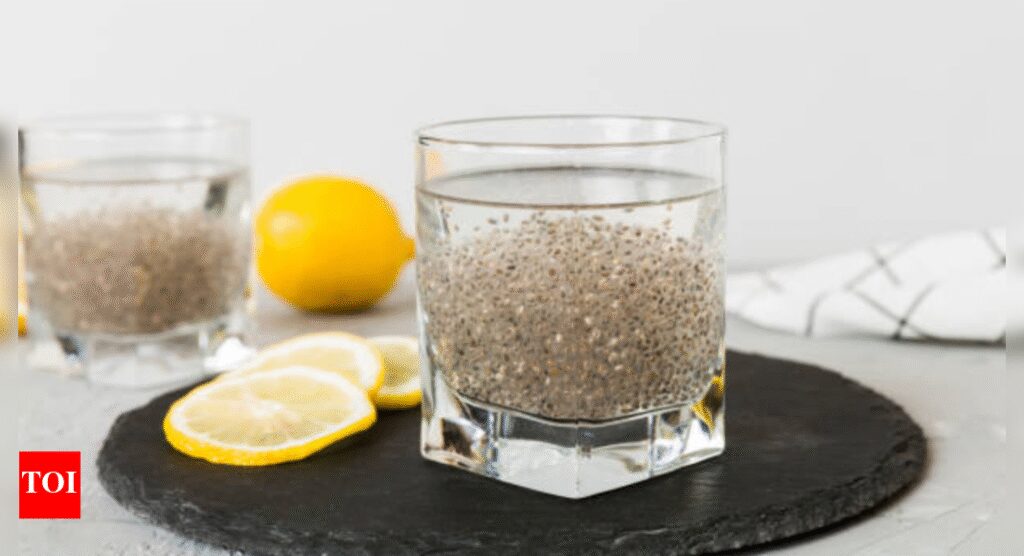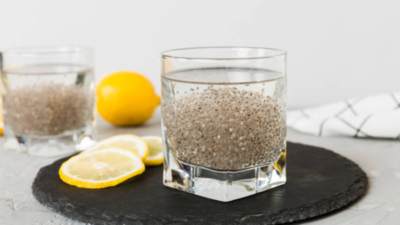Once upon a time someone dropped a spoonful of chia seeds into a mason jar of almond milk, forgot about it, and returned to discover pudding magic. Fast forward, and we’re now living in a world where chia seeds have gone from ancient Aztec fuel to global wellness royalty.They’ve infiltrated our breakfast bowls, our Pinterest boards, our smoothies, and yes even our water bottles. You’ve likely seen chia puddings layered like parfaits, glistening under honey drizzles and artfully topped with strawberries.From fitness influencers in LA to Delhi, everyone seems to be sprinkling, soaking, and slurping these seeds like their life depends on it. But why? Why are we collectively losing our health-conscious minds over something that looks suspiciously small? The answer lies in what chia seeds actually are: small but mighty nutritional powerhouses that are just as good for your gut as they are for your Instagram aesthetic.So, let’s get into the juicy pulp of this story: what makes chia seeds a legit superfood, why the world is going absolutely bonkers over them, and how you can eat them the right way to squeeze out every last drop of benefit.
Where do these tiny seeds come from?
Chia seeds, in case you missed the trend train, come from the Salvia hispanica plant, a species in the mint family native to Mexico and Guatemala. These little dynamos were once a staple in the diets of ancient civilizations like the Aztecs and Mayans, who considered them essential for stamina and strength. Fast forward a few centuries, and science is starting to agree. A 2015 study published in the Journal of Food Science and Technology revealed that chia seeds are loaded with omega-3 fatty acids, antioxidants, fiber, high-quality protein, and a slew of essential minerals like calcium, phosphorus, and magnesium.So, yes, chia seeds deserve the hype. For starters, they contain more omega-3s per gram than salmon, more calcium than milk, and more fiber than most cereals. One tablespoon delivers nearly 5 grams of fiber, which is why people who add chia to their daily diet often report better digestion and longer satiety between meals. They’re also rich in antioxidants that fight off inflammation and oxidative stress—a fancy way of saying they help you glow from the inside out.
How you eat chia seeds matter
Dry chia on toast or dumped raw into a smoothie won’t give you the magic you’re looking for. These seeds need to be soaked, think of it as their personal glow-up moment. When chia seeds absorb liquid, they swell up to 10–12 times their original size, creating a gel-like casing that does wonders for your digestive system and helps regulate blood sugar spikes. That’s why you’ll often find chia in puddings, overnight oats, or “chia fresca”—a hydrating drink made by mixing them with water and a splash of citrus.If you want to actually get the benefits (like staying full longer, digesting like a champ, and maybe even shrinking that waistline), you must eat them the right way.Step one: Soak them. Chia seeds are basically sponges in disguise. When you soak them in water, milk, or juice, they absorb the liquid and form a gel-like texture. This not only makes them easier to digest but also boosts their ability to make you feel full. And fullness = less snacking. Try mixing 1 tablespoon of chia seeds with ½ cup of water or almond milk. Let it sit for at least 30 minutes (or overnight if you’re fancy).Boom—chia gel, aka the good stuff.Step two: Make chia pudding your bestie. Chia pudding is the go-to for a reason. It’s easy, filling, and tastes like dessert if you do it right. Mix 2–3 tablespoons of chia seeds with 1 cup of plant milk, add a splash of vanilla, cinnamon, or cocoa powder, and refrigerate it overnight. Top it with fruit or nuts and thank yourself later.Step three: Chia water. If you’re trying to lose weight, drinking chia water is a sneaky-smart trick. Add 1 tablespoon of chia seeds to a glass of water with lemon or lime juice. Wait 15 minutes and stir. It’ll keep you hydrated and help curb hunger between meals. Some people swear it keeps them from reaching for snacks all afternoon.Step four: Add to literally everything. Once you’re soaking them properly, chia can go in smoothies, oatmeal, yogurt, soups, or even baked goods. You won’t taste them much, but your body will definitely feel the benefits—like more fiber and protein.Obsessed much? Oh yes, we are. Chia seeds have become the darlings of health culture because they’re versatile, easy to prepare, and fit perfectly into virtually every diet: vegan, keto, paleo, gluten-free—you name it. They’re the neutral party of the nutrition world, blending into whatever lifestyle you’re rocking this month. A study in Diabetes Care even found that regular chia consumption reduced blood pressure and inflammation in patients with type 2 diabetes.Another research review suggested that chia can help manage cholesterol levels and may even promote weight loss, thanks to their impressive fiber content and satiating effects.The obsession isn’t just about health, though—it’s about lifestyle. Chia puddings are Instagrammable. They’re customizable. They let you play mad scientist with your fridge. One day it’s matcha chia pudding with coconut yogurt; the next, it’s chocolate-peanut butter with banana slices. Eating healthy has never felt so indulgent—or so photogenic.At the end of the day, chia seeds are proof that big things come in tiny, jelly-like packages. So, the next time someone offers you a spoonful of gooey, glistening chia pudding, don’t wrinkle your nose. Grab it, stir it, soak it, and eat it like your gut will thank you. Because in the world of superfoods, chia is not just a phase—it’s a full-on revolution in a teaspoon.


